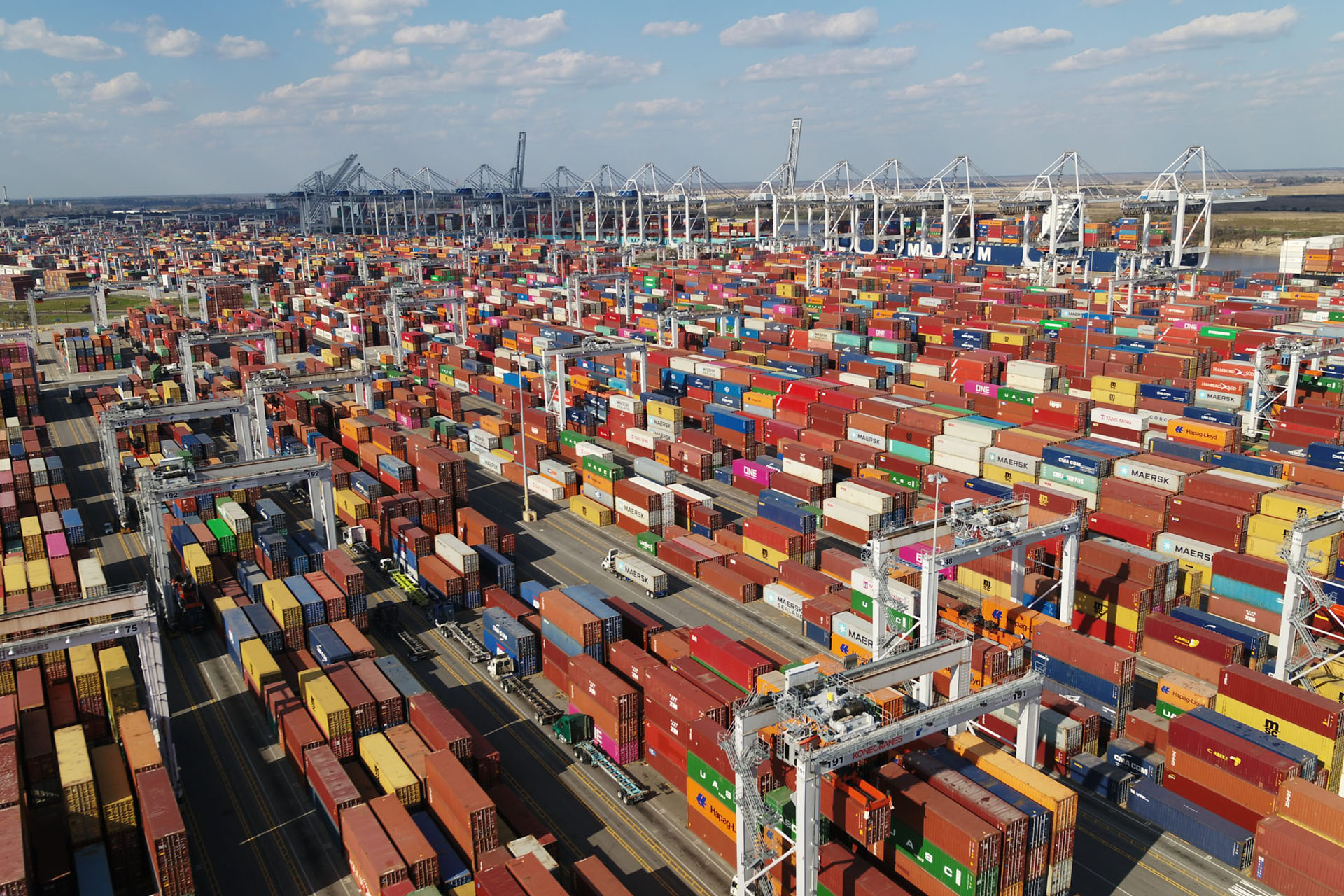Inbound cargo volume at major container ports in the United States should see year-over-year increases through the first half of the year despite attacks on shipping in the Red Sea, according to the Global Port Tracker report released by the National Retail Federation and Hackett Associates.
Conflict in the Red Sea only directly affects the small proportion of U.S.-bound cargo that proceeds through the waterway but can rattle the international shipping sector.
In December, the latest month with available final numbers, U.S. ports covered by Global Port Tracker handled 1.87 million Twenty-Foot Equivalent Units, one 20-foot container or its equivalent. The number slipped 1% from November but gained 8.3% year over year. December’s results brought 2023 to 22.3 million TEU, down 12.8% from the year earlier.
Ports have yet to report January numbers, but Global Port Tracker projected the month at 1.81 million TEU, up 0.3% year over year. The February forecast is 1.86 million TEU, up 20.4% year over year, with the March forecast at 1.71 million TEU, up 5.5% year over year. February is traditionally the slowest cargo volume month due to the Lunar New Year factory shutdowns in Asia. However, the timing of the holiday, its impact on cargo and year-over-year comparisons vary. The Global Tracker forecast for April port volume is 1.83 million TEU, up 2.6% from the month in 2023. The year-over-year forecast for May is 1.94 million, up 0.3%, and for June, it is 1.93 million TEU, up 5.5% from 2023.
The forecasted numbers would bring the first half of 2024 to 11.1 million TEU, up 5.3% from the same period in the year prior.
Hackett Associates founder Ben Hackett, in announcing the port numbers, said carriers are using a surplus of capacity built up during the pandemic to ease the impact of the Red Sea conflict as voyages are diverted around the Cape of Good Hope or to the U.S. West Coast. He added that the overall situation already is improving.
“The shipping industry has rapidly adjusted by adding extra vessels to its networks and has returned to normal weekly ship arrivals,” Hackett said. “Service from Asia to the U.S. East Coast is working well and the dramatic rise in freight rates is showing signs of easing, with pressure from shippers likely to quickly bring these down.”
However, NRF vp for supply chain and customs policy Jonathan Gold struck a cautionary note.
“Only about 12% of U.S.-bound cargo comes through the Suez Canal, but the situation in the Red Sea is bringing volatility and uncertainty that are being felt around the globe,” he stated. “U.S. retailers are working to mitigate the impact of delays and increased costs. However, the longer the disruptions occur, the bigger impact this could have. More needs to be done among partners and allies to ensure the safety of vessels and crews in order to avoid yet another year of supply chain disruption.”
Global Port Tracker, produced for the NRF by Hackett Associates, provides historical data and forecasts for the U.S. ports of Los Angeles/Long Beach, Oakland, Seattle and Tacoma on the West Coast, New York/New Jersey, Port of Virginia, Charleston, Savannah, Port Everglades, Miami and Jacksonville on the East Coast, and Houston on the Gulf Coast.





